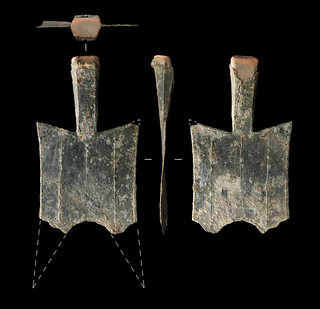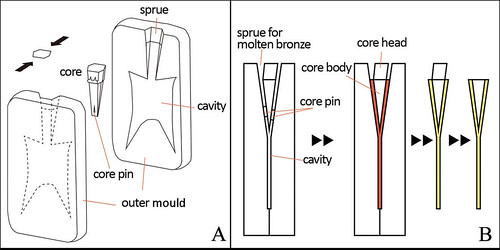
PREV ARTICLE
NEXT ARTICLE
FULL ISSUE
PREV FULL ISSUE
'WORLD'S OLDEST' COIN FACTORY FOUNDEd Hohertz was the first to pass along the story of the early mint discovered in China. Thanks also to Kavan Ratnatunga, Arthur Shippee, and Len Augsburger. -Editor 
Archaeologists excavating the remains of Guanzhuang—an ancient city in China’s eastern Henan Province—have discovered what they believe is the oldest-known coin mint, where miniature, shovel-shaped bronze coins were mass produced some 2,600 years ago. Their research, published today in the journal Antiquity, gives weight to the idea that the first coins were minted not in Turkey or Greece, as long thought, but in China. The walled and moated city of Guanzhuang was established about 800 B.C., and its foundry— where bronze was cast and beaten into ritual vessels, weapons, and tools—opened in 770 B.C., according to Hao Zhao, an archaeologist at Zhengzhou University and the paper’s lead author. But it wasn’t for another 150 years that workers began minting coins outside the southern gate of the inner city. Using radiocarbon dating, the team determined the mint began operating sometime between 640 B.C. and no later than 550 B.C. While other research has dated coins from the Lydian Empire in what is now Turkey to as early as 630 B.C., Zhao notes that the earliest mint known to have produced Lydian coins dates to sometime between 575 B.C. and 550 B.C.
The Guanzhuang mint, Zhao says, During their excavation, the researchers found two spade coins—which look like shrunken versions of the gardening tool—and dozens of clay molds used to cast them. One coin was in near-perfect condition: Just shy of 6 inches long and about 2.5 inches wide, the bronze coin weighed about 27 grams, or less than six sheets of standard-size computer paper. 
Coins are often found The completeness of the discovery is what’s remarkable, says Maurer, who was not involved in the research. Finding both coins and their molds is what allowed the researchers to radiocarbon date the mint, lending weight to their assertion that it’s the oldest known in the world.
To read the complete article, see:
To read other articles on the topic, see:

Wayne Homren, Editor The Numismatic Bibliomania Society is a non-profit organization promoting numismatic literature. See our web site at coinbooks.org. To submit items for publication in The E-Sylum, write to the Editor at this address: whomren@gmail.com To subscribe go to: https://my.binhost.com/lists/listinfo/esylum All Rights Reserved. NBS Home Page Contact the NBS webmaster 
|